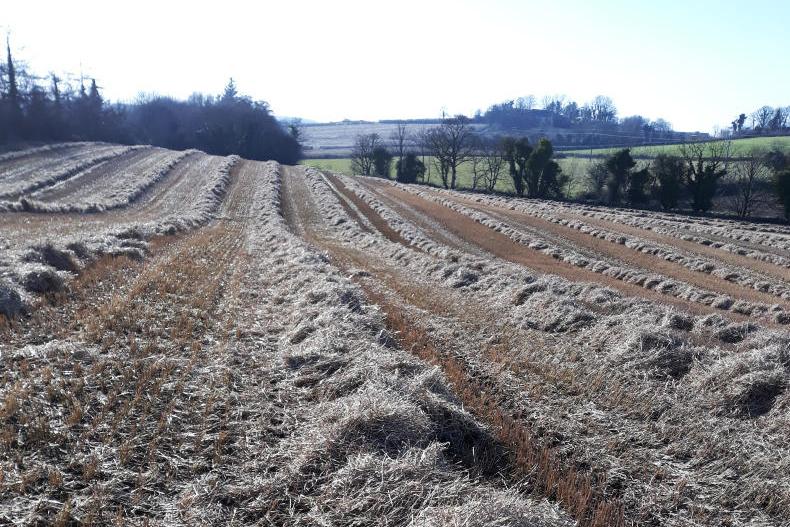Active week but a false dawn
There were a lot of action out on land over the past week with ploughing, spraying, baling, combining and even some planting taking place. But this is all being delayed again by bad weather.
Land certainly dried out and the drying continued through the snow flurries early in the week. But we must now wait and see how much total snow will fall and how long the cold snap will last.
Snow amounts may be variable but it seldom produces that much water. An average conversion for show depth to water amount is about 10:1 but this can vary both above and below depending on the temperature and the type of snow. But a slow thaw will make land messy again.
Soil temperatures are running below normal for the past week and this will likely fall further for the week ahead so no need for panic on planting or fertiliser application.
Straw and grain
There was a lot of activity in baling straw in the past week and some growers even had combines out in an effort to get fields cleared.
Bales are certainly the easiest way to remove the problem but where straw is to be incorporated it is preferable to get some mixing of soil and straw before incorporation.
Cold risks
If temperatures get as low as suggested there are a number of risks to watch for. Antifreeze in all water cooled engines is one and antifreeze in sprayers, especially in the fluid in the pump, is another. Snow cover may ease the risk somewhat.
Crops in the fields are a different matter. Snow cover may help but advanced crops, especially early autumn sown spring oat varieties, are at particular risk if the developing ear has come above ground. Once this happens the head and stem can be killed by low temperatures.
Fertiliser
There may be little point in thinking about this for another week or so now due to the combination of snow and cold. But if you have avoided the snow and ground is dry it is still useful to have a little N applied to winter barley and rape for when growth returns.
Soil pH is critical and lime should be applied where it is needed, especially for barley, beans or rape. Granular lime or Growmax could be considered on any crop in spring for immediate effect. Whether land is sown or not and tramline width influence product choice. Both are faster acting than ground limestone but should only be considered as part of the long term solution to get pH corrected.
Most winter crops have yet to receive their P and K and this will go on now. We must remember that previous big yields result in increased off-takes of P and K. An 11 t/ha crop of winter barley plus straw is said to remove 42kg P/ha and 108kg K/ha while a 9 t/ha crop removes 34kg P/ha plus 88kg K/ha.
Oats removes even more P & K than the other cereals and this needs to be factored into fertiliser plans and rotation programmes.






 This is a subscriber-only article
This is a subscriber-only article










SHARING OPTIONS: